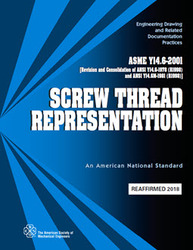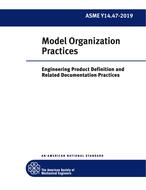Description
This Standard is a summary of nomenclature and terminology currently used to define and/or describe mechanical fasteners, related characteristics, and the manufacturing processes that produce these products. Utilization of these terms by manufacturers and consumers is intended to reduce or eliminate confusion and serve as a sound basis for communication.
(a) Primary Operations. Mechanical fasteners are produced by forming or screw machine operations. Forming is generally scrapless and, depending upon size, may produce fasteners at rates exceeding 500 pieces per minute. Screw machining, although more tightly toleranced, is significantly slower and generates scrap because it involves the removal of material.
(b) Secondary Operations. Fasteners generally undergo several secondary operations or processes such as thread rolling, heat treating, or plating.
(c) Fastener. A fastener is a mechanical device designed specifically to hold, join, couple, assemble, or maintain equilibrium of single or multiple components. The resulting assembly may function dynamically or statically as a primary or secondary component of a mechanism or structure. Based on the intended application, a fastener is produced with varying degrees of built in precision and engineering capability, ensuring adequate, sound service under planned, preestablished environmental conditions. (d) Bolts, Studs, Screws, Nuts, Washers, Rivets, Pins, and Custom Formed Parts. These items are the general product families in which mechanical fasteners are best classified. Within each product family are numerous types that may have a name conforming to the technical language of a national standard or alternately may have a name that has its origins in commercial or marketing nomenclature often taken from its intended application. Such names, for example, include the “stove bolt” and “carriage bolt.”
Because mechanical fasteners are used in just about every mechanical assembly, they necessarily have been designed to meet a broad range of applications from watch and computer assembly to space shuttle design. The names given to fasteners appear to be as limitless as the designer’s imagination. While many fasteners may look alike, they generally have defined engineered capabilities based upon their intended application.
Product Details
- Published:
- 02/23/2012
- ISBN(s):
- 9780791834053
- ANSI:
- ANSI Approved
- Number of Pages:
- 72
- File Size:
- 1 file , 830 KB
- Redline File Size:
- 2 files , 3 MB




